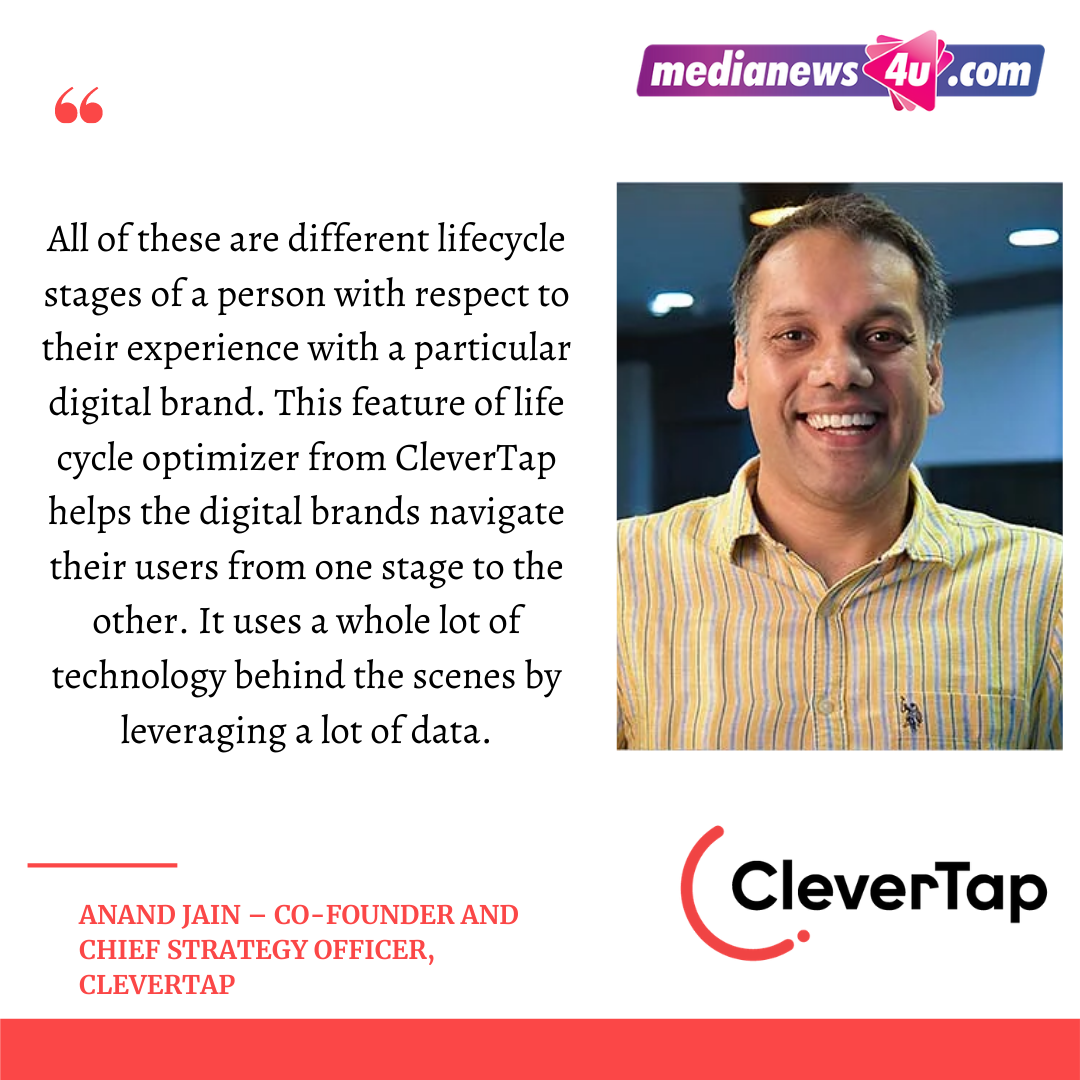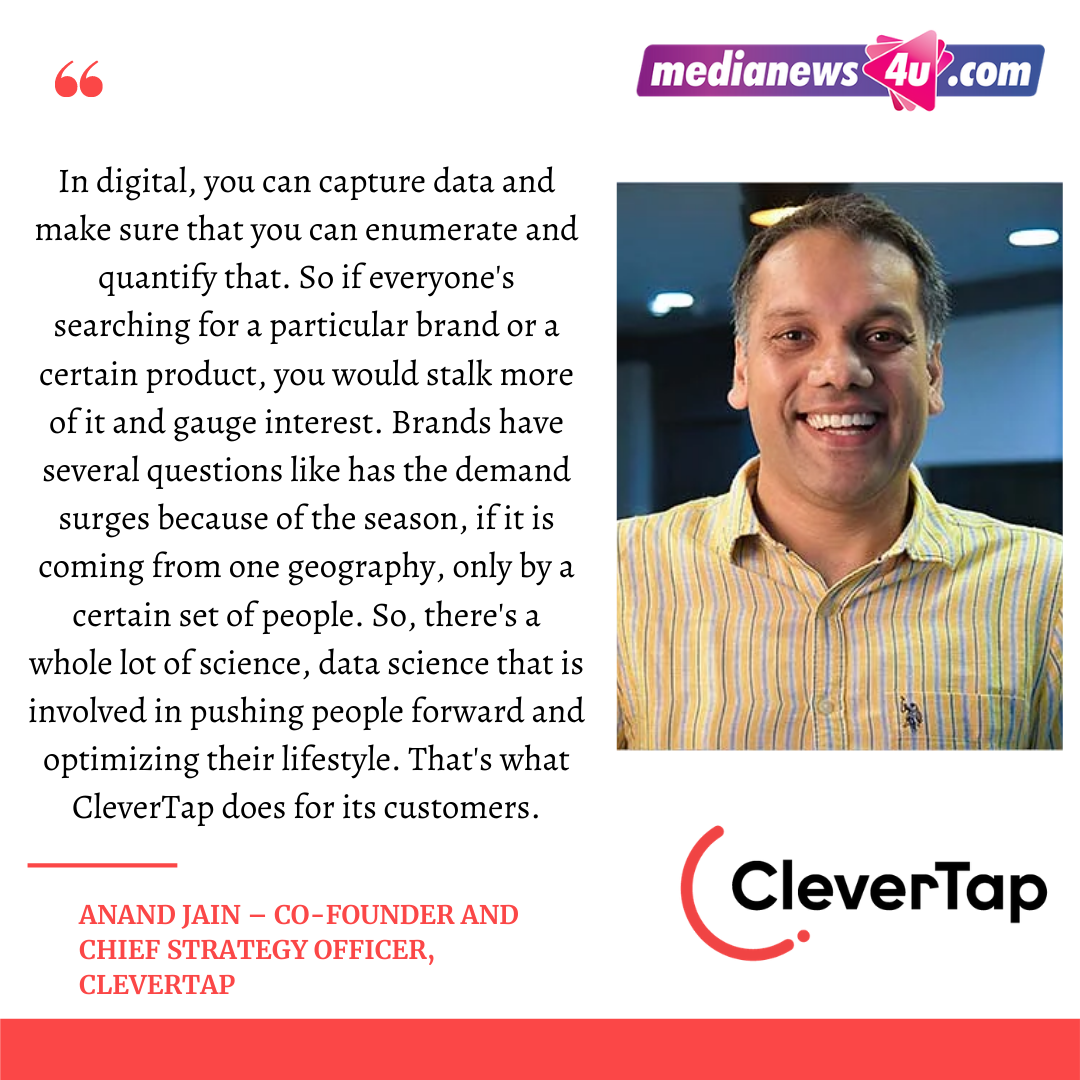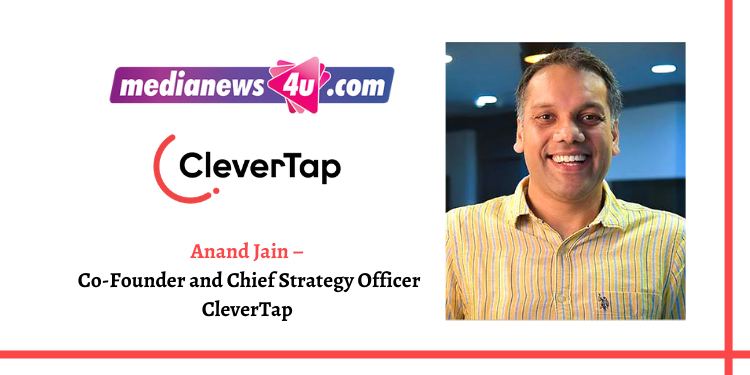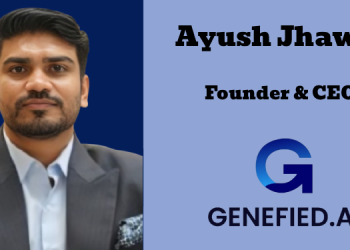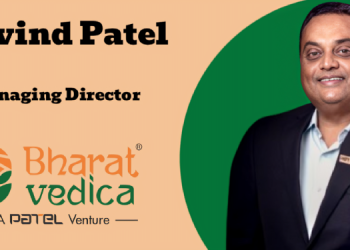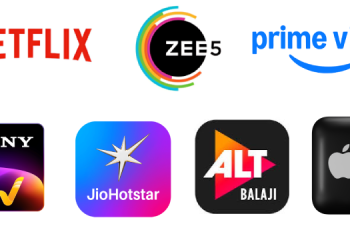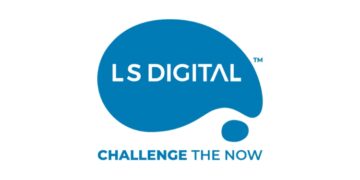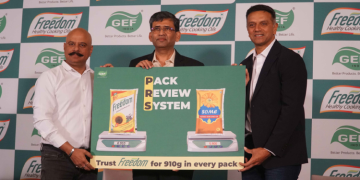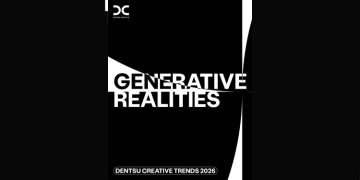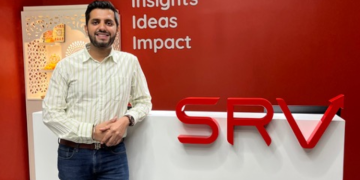CleverTap is the leading AI-powered customer engagement and retention platform that helps brands maximize user lifetime value. Consumer brands around the world representing over 8,000 apps—including Vodafone, Star, Sony, Discovery, Fandango LATAM, Carousell, and Gojek—trust CleverTap to help them improve user engagement and retention thereby growing long term revenue.
CleverTap is the most complete and capable platform for mobile growth teams. By combining real-time analytics, a powerful segmentation engine, and a suite of engagement tools, the team has everything they’ll need to build an amazing mobile experience.
In a conversation with Medianews4u, Anand Jain – Co-Founder and Chief Strategy Officer, CleverTap spoke on their growth, AI & Machine learning to personalize data for clients & more.
When was CleverTap launched and what has been your growth trajectory?
CleverTap was started in 2013 but the first three years went into developing the core technology that powers the product. The commercial launch started in 2015. That was the year when we signed our first customer.
How challenging has the growth been?
We have enjoyed fantastic growth with growth being more than 100% Y-o-Y for the first four years of the company. We found a lot of traction in our home country India and Southeast Asia and we work with some of the largest brands in this part of the world. In the last three years, we have also expanded in other regions of the world especially Latin America and Europe. We are very fortunate to be working with the best of the brands and fast-growing brands.
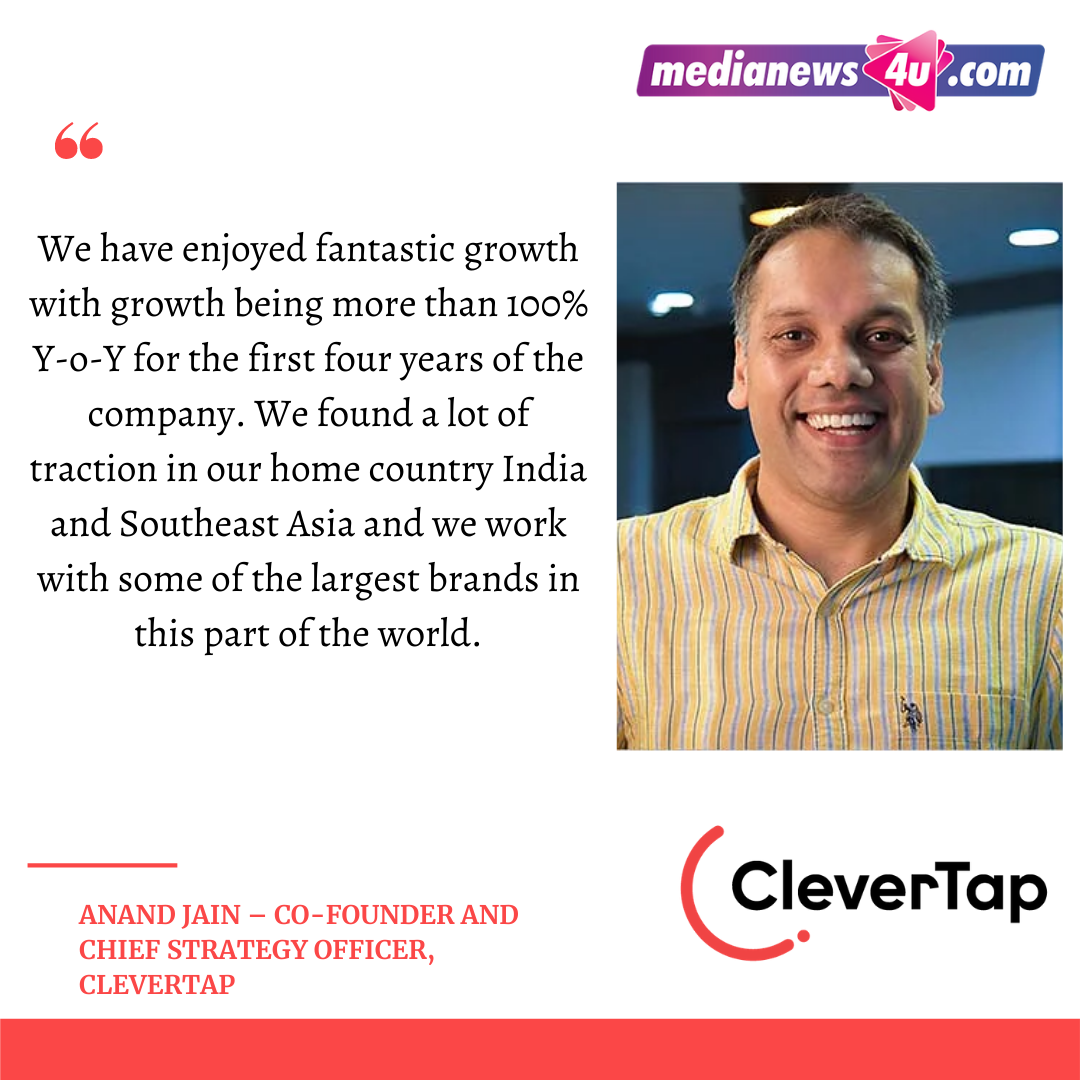
You said that you went commercial in 2015 and you’re also the first one to use AI and machine learning for brands. How challenging was this to change the mindset of brands and accept something new like this?
It was very hard. We operate in the marketing technology space which means that CleverTap would be used by growth, products, and marketing teams in consumer companies to improve user retention, increase user engagement and communication, personalized experience, etc. Outside of the push notifications, there are emails that have been around for like, 20 plus years now. Brands have been sending emails to their users, in one form or the other. Most of the communication that was sent out or most of the personalization that was done was very shallow. For example, we receive emails, which probably mention, our first name like, “Hey, ABC these are the products you looked at last night” Most of the emails that we receive are very simplistic. They might be products that we looked at, or offers we may be interested in. In most cases, all of that is very static and rule-based. With AI and machine learning, brands have an opportunity now, to go to a deeper level of personalization and intelligence. That is a hard thing to adapt because most people are used to their old ways of doing things and habits are the hardest to change. Hence, it takes a while for us to convince customers to anticipate the needs of a person and personalize better. We tell them that they might be able to send them something that they might be interested in looking at and because of what they have exhibited the behaviors that exhibited but may not have expressed a direct interest. Or if a person is about to say, for example, uninstall your app or go away from your app, join as a customer. These are the things you should do to make sure that you retain the customers. So it was a bit of a challenge because you go from rule-based to using machine learning and AI. But the last three or four years since we have monetized the platform, we have seen this behavior change because a lot of brands also realize that that is a way for them to be more competitive in the market. It is known that everyone has a lot of data. There is no dearth of data, you can only apply machine learning if you think that something good is going to come out of the data. So, a product like CleverTap enables optimum use of data for brands to become better at communicating with the users or anticipating what they want. And then the results show up and that is how people are convinced. As nothing proves that the product works then the results that the product offers.
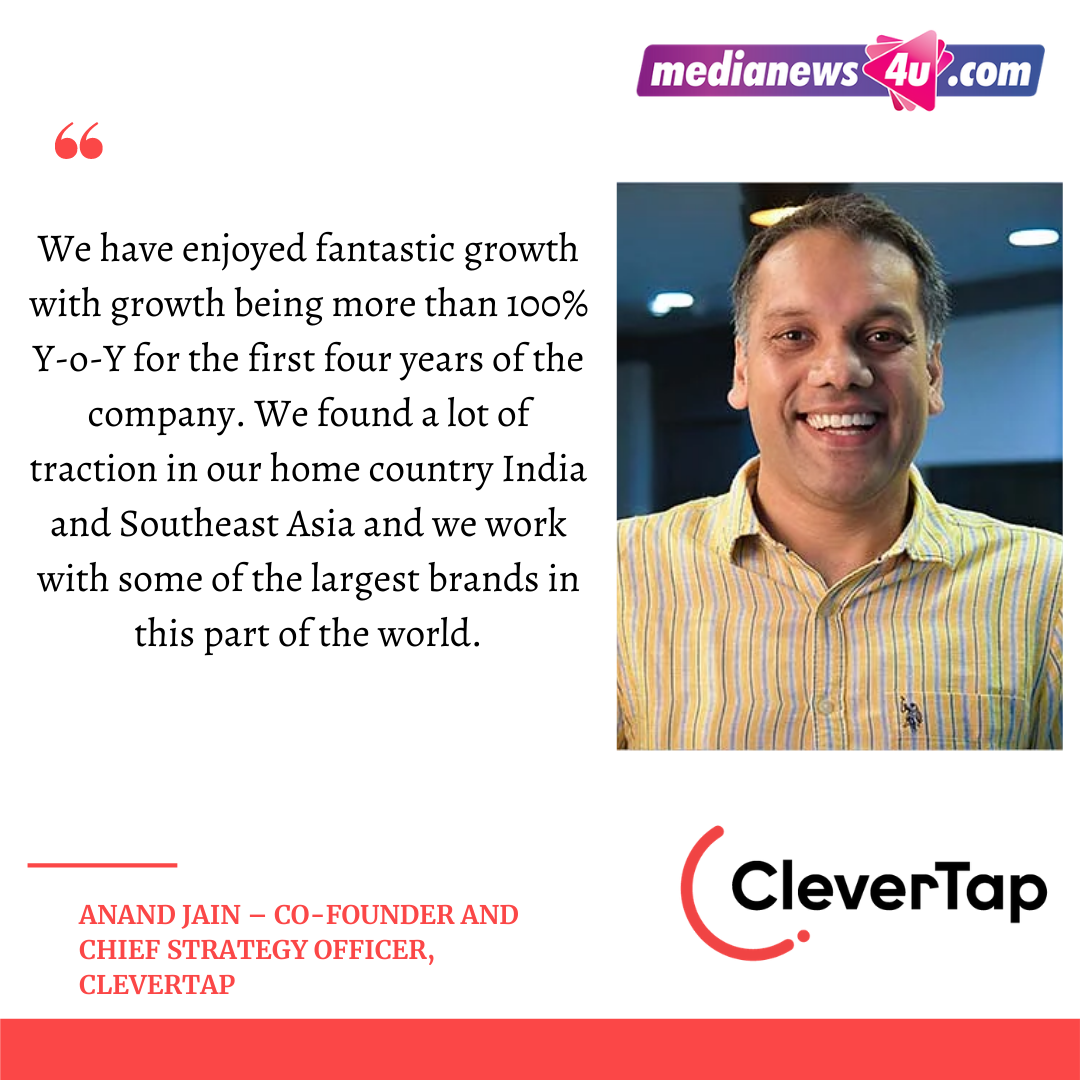
How do you personalize data for your clients, and how is the reach for a set brand?
There are multiple ways to personalize the data. For example, what CleverTap does is on behalf of the customer; let’s say you are a food delivery app – The way you would use CleverTapto send a record user behavior. For example, ABC is a customer on this user, he would launch the app, surf around, maybe he would look for options in Mumbai or he would want to try out a new restaurant for home delivery, etc. All that data would be stored with CleverTapand depending upon the customer activities or what he is about to do, you can personalize the experience, for example, if using CleverTap of food brand to detect, like this customer likes to eat out, or order in from a new place every time while there are some people who want to go to the tried and tested places. Or on weekends, this customer is most likely to order a brownie as opposed to weekdays, or during weekends, their dinner timings change, and they end up having a late dinner. So, personalization is not limited to calling customers by their name, or just wishing them good morning, in the morning through email or a notification. It actually goes much deeper. True personalization is something that becomes transparent or goes into the background. For example, let’s say that I was a new user who was signing up, and depending upon what they have seen with people like me in the past, they could customize my onboarding journey. And if you can do that, that’s the true personal experience. For eg: You walk into a Chroma or a physical store to buy a television and your kind of struggling to locate the televisions, the store manager or someone who’s on the floor would walk up to you and say, hey, how can we help you? And that is a personalized experience. If you happen to visit a store you regularly visit and happen to know about all the particulars, then no one comes to interrupt you. In this case, maybe the conversation is different like, they ask you how big the room is or if you’re looking for the LED screens. In the real world, this level of personalization works very well. So, extending that example, let’s say you bought the television, and a couple of days later, when you entered that store, again, they are not going to ask you to buy one more television. Most likely, they are going to say hey, is the TV working all right? Is there anything else we can help you with? Maybe speakers or a sound system? So, in the real world without using big data and all this intuitively, this level of personalization works. Now, what if you could take that level of personalization and offer it online, where you’re not hammered by ads or products that other people have bought. The products that are shown are very specific and custom to you. The action that the product recommends, or a notification that they send is relevant for you. So, we do that level of personalization for our clients. And again, our clients are spread across multiple industries, whether it’s food tech, ride-hailing, FinTech, streaming apps, gaming, banking, retail, travel, and transportation, etc.
You have mentioned lifestyle life cycle optimizer gives brands an effective way to understand customers in the context of defined lifestyle stages and enables them to progress. Can you elaborate on this in layman’s terms?
Absolutely. Let’s go back to the store example I was giving and then we’ll convert this to what habitat does. Let’s say you enter an electronics store. You’re browsing around and after 30-40 minutes, you look at different products and you exit the store. That’s one behavior. Let’s say a week later, you come back to the same store and now you go to the washing machine section and you may want to buy a new washing machine for your home. And now you’re looking at capacities of the washing machine and other functions? And then you go away. And the third act would be you’re coming in and measuring the washing machine just to see whether it will fit in at your home. You ask the store about the price, EMI offers a warranty, etc. Now, if you compare and contrast these reactions, they’re, very different. In the first one, it was just like I am browsing around like what we do on Netflix, Amazon, Instagram, etc. We just browse around with no intention to buy. It’s just like window shopping. The second action is and expressed intent. Like a customer might be interested in a washing machine. Now, he has not expressed his intent to buy a washing machine. But out of all the things, he narrows down his focus to a washing machine. For example, last year in India, a lot of people bought dishwashers due to the lockdown. Prior to that very few people were buying dishwashers. The third action is to show intent to buy the product. Because you’re not measuring the product, you’re asking about price, discount, payment options, etc. That’s the real-world action. Let’s translate that into a lifecycle optimizer. There are a lot of more stages. Each of these things would become an intent. For eg: you go to a retailer’s app and you’re browsing around.

Some of that would just be like – know where you are in your life cycle. Maybe you are a new user for the app and maybe you are skeptic, you have not even registered or signed up, you are just trying to browse around and see their collection, whether they have a certain product, in your size, your favorite colors, your favorite brand, in the right price points, or if there is a sale going on today or a weekend. So there will be different actions. As a brand owner, you push a user from one stage to the other without knowing the details of the customers. You try to get the customer to sign up after this is the fifth time they have browsed around. And we offer them something, like, if you sign up today, we might be able to tell you when there is a discount or sale going on, or when your favorite brand restocks. And then the customer thinks that’s a good reason to sign up and completes the signup process. The next nudge from the brand could be saying – your favorite brand is in stock and we have got some exclusive styles from the brand. Would you like to browse them? And the customer is like – Okay, well, this is good, let me do that. So and so forth, all the way to transacting, you buy the first time from the brand and then you become an advocate of the brand. All of these are different lifecycle stages of a person with respect to their experience with a particular digital brand. This feature of the life cycle optimizer from CleverTaphelps the digital brands navigate their users from one stage to the other. It uses a whole lot of technology behind the scenes by leveraging a lot of data. For eg: Let’s say Chroma, found out that one person in a month would come and request for dishwashers but now there are three in a day and then it became 10 in a day. People would call them up maybe on social media or send them an email. That’s a simple signal for them to stock more of the dishwasher as they realized that it’s becoming popular because of lockdown and let’s get more of these dishwashers. So, they basically use data. For example, the number of people inquiring about dishwasher but without being super cognizant about it. In digital, you can capture data and make sure that you can enumerate and quantify that. So if everyone’s searching for a particular brand or a certain product, you would stalk more of it and gauge interest. Brands have several questions like has the demand surges because of the season, if it is coming from one geography, only by a certain set of people. There is a whole lot of science, data science that is involved in pushing people forward and optimizing their lifestyle. That’s what CleverTap does for its customers.
